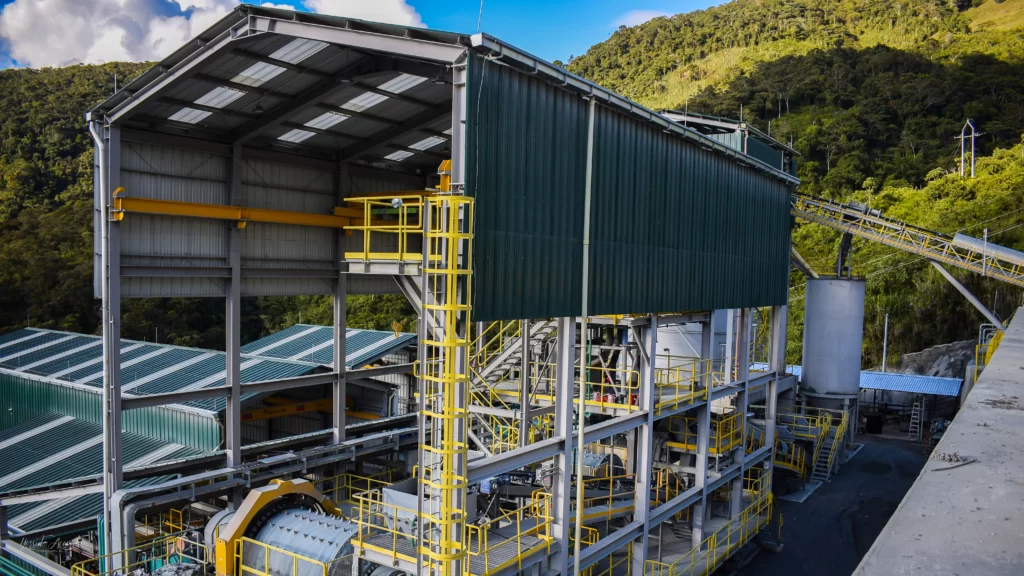February 2, 2012, Calgary, Alberta: Antioquia Gold Inc. (“Antioquia Gold” or the “Company”) (TSXV: AGD; OTCQX: AGDFX) reports that the Company continues to expand the size of the Guaico deposit by extending the mineralization of the main Guaico vein to depth and delineating and finding new gold-bearing veins in the footwall and hanging wall of the main Guaico vein.
Furthermore, drilling into the La Manuela structure has confirmed the mineralization first encountered in the La Manuela artisanal mine continues along strike and to depth. Refer to Figure 1 for locations.
Select results from the 2011 drilling program for the final 10 holes at the Guaico deposit and the 4 holes from the La Manuela structure include:
Guaico:
• 8.10 g/t Au over 4.0 meters, including 20.37 g/t Au over 1.4 meters;
• 15.84 g/t Au over 1.6 meters;
• 2.81 g/t Au over 6.9 meters, including 6.76 g/t Au over 2.7 meters;
La Manuela
• 9.22 g/t Au over 1.4 meters
• 3.85 g/t Au over 3.0 meters, including 9.06 g/t Au over 1.3 meters.
Guaico
In 2011 Antioquia Gold Inc. drilled twenty-four (24) drill holes at the Guaico deposit amounting to 5,851 meters of drilling. Currently four (4) individual mineralized zones have been interpreted at Guaico. It is now apparent continued drilling at Guaico is likely to be successful in delineating additional mineralized zones in the footwall and hanging wall of the main Guaico vein, as well as extending the four (4) additional defined veins in the hanging wall and foot wall along strike and to depth. Figure 2 defines the spatial relationship of mineralized veins defined to date at the Guaico deposit and La Manuela structure.
La Manuela
Four (4) drill holes drilled in 2011 amounting to 930 meters were designed to test the continuation of mineralization within the La Manuela artisanal mine along strike and to depth. Average grade of samples collected within the artisanal mine averaged 12.03 g/t Au. Drill hole MNL11-001 intersected the La Manuela structure and returned an intercept of 3.85 g/t Au over 3.0m. Current interpretation of the La Manuela structure suggests a strike length of 110 meters and a depth extent of 230 meters. The La Manuela structure occurs 300 meters west of and parallels the veins of the Guaico deposit and remains open along strike and to depth (Figure 1). This is significant in that it suggest the La
Manuela structure has the potential to develop into a multi-zone deposit similar to the Guaico deposit.
Cerro
To finish the 2011 drilling program three (3) holes were drilled at the Cerro prospect area situated some 800 meters east of the Guaico deposit. The drilling at Cerro was to further test a structure identified from surface geochemistry. No significant gold results were encountered however geochemical signatures indicate continued potential for the area.
“As a result of the 2011 drilling program and continued success at intersecting the mineralized veins in the Guaico area, Guaico has been elevated to deposit status. We now have 2 deposits defined on the Cisneros project (Guaico and Guayabito) and are optimistic these are but the first of many to develop from other identified structures and regional targets,” says Brad Van Den Bussche, VP of Exploration for Antioquia Gold.
Highlights for the drill results of the drill holes referred to above for Guaico, La Manuela and Cerro can be found in Table 1 below.
About Antioquia Gold Inc.
Antioquia Gold has been exploring for precious metals in Colombia since 2007. The Company has a land package of close to 40,000 hectares located throughout Colombia. Antioquia’s principal asset, which is being actively explored, is its 5,630 hectare Cisneros Project, located 55 kilometers northeast of Medellin in the Department of Antioquia, Colombia. At the Cisneros Project the Company has conducted extensive geochemical and geophysical programs over the entire property and has identified to date six exploration targets. On the original discovery zone it has drilled over 30,000 meters and is well versed in the understanding of the deposit type and the project’s path to resource definition and production.
To ensure reliable sample results Antioquia has a rigorous QA/QC program in place that monitors the chain of custody of the samples and includes the insertion of blanks, preparation duplicates, field duplicates, and certified reference standards in each batch of samples. Core is photographed and sawed in half with one half retained in a secured facility for future reference if needed. Sample preparation (crushing and pulverizing) is performed at either SGS or ACME laboratories in Medellin, Colombia.
Samples prepared by SGS (Medellin) are direct-shipped to SGS Laboratories in Lima, Peru or Toronto Canada, both ISO certified laboratories, for analysis. Samples prepared by ACME (Medellin) are direct shipped to ACME Laboratories in Vancouver Canada, also an ISO certified laboratory for analysis. Assay for gold is performed by fire assay with 30g charge and AAS finish, with a gravimetric finish for over limit samples

